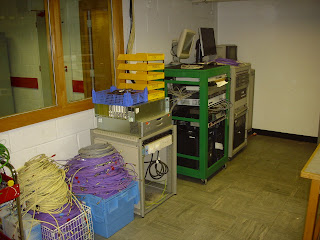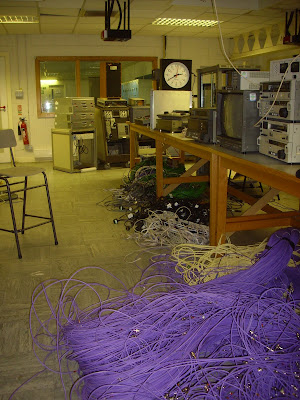Even though we have been talking with Timeline about the possibility of getting an EVS from them to deal with playout I still felt that it would be use3ful to get the Omneon up and running as a backup. I connected the director to two media ports via firewire and then powered up the store. At this point I realised that I didn’t have the connector between the fibre channel connections on the Director and the 9 pin D-type connections on the store. After a fruitless search for this cable I emailed Omneon support using a link on their website.
N-Store
Simon from Omneon support got back to me on the same day and has been incredibly useful helping to identify our system as a D1 (Director) with an NStore (Storage). However he also stated that “This is a very old unsupported system”, no surprises there, but it appeared that all we were missing was the connection cable which is hopefully being sent through as I write this.
Director
Although we may not use the Omneon on the day we will certainly get the system up and running and ingest content onto it just to make sure that it still works. At the end of the day the EVS will have to be returned and while it is a viable work around I think we still need to be looking at re-integrating the Omneon with the Pharos control platform in the long term. Maybe this could be done next year as a side project integrating it with the mobile presentation racks.
Fibre Channel Connections


















